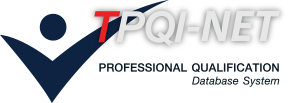หน่วยสมรรถนะ
Remove and install advanced aircraft instrument system components.
สาขาวิชาชีพการบิน
รายละเอียดหน่วยสมรรถนะ
| 1. รหัสหน่วยสมรรถนะ | AVT-FTN-3-066ZA |
| 2. ชื่อหน่วยสมรรถนะ | Remove and install advanced aircraft instrument system components. |
| 3. ทบทวนครั้งที่ | - / - |
| 4. สร้างใหม่ |
|
ปรับปรุง |
|
| 5. สำหรับชื่ออาชีพและรหัสอาชีพ (Occupational Classification) | |
|
|
|
| 6. คำอธิบายหน่วยสมรรถนะ (Description of Unit of Competency) | |
| This unit of competency requires application of hand skills and the use of maintenance documentation/publications in the removal and installation of components of advanced instrument systems of fixed and rotary wing aircraft during scheduled or unscheduled maintenance. Work may be completed individually or as part of a team. It covers the skills and basic knowledge required for the removal and installation of general instrument system components in the more advanced types of both fixed and rotary wing aircraft. | |
| 7. สำหรับระดับคุณวุฒิ |
| 1 | 2 | 3 | 4 | 5 | 6 | 7 | 8 |
|---|---|---|---|---|---|---|---|
| 8. กลุ่มอาชีพ (Sector) | |
| 7232 Aircraft Mechanics | |
| 9. ชื่ออาชีพและรหัสอาชีพอื่นที่หน่วยสมรรถนะนี้สามารถใช้ได้ (ถ้ามี) | |
| N/A | |
| 10. ข้อกำหนดหรือกฎระเบียบที่เกี่ยวข้อง (Licensing or Regulation Related) (ถ้ามี) | |
| ICAO Doc 7192 / EASA Part 66 | |
| 11. สมรรถนะย่อยและเกณฑ์การปฏิบัติงาน (Elements and Performance Criteria) |
| หน่วยสมรรถนะย่อย (EOC) | เกณฑ์ในการปฏิบัติงาน (Performance Criteria) | รหัส PC (ตามเล่มมาตรฐาน) |
รหัส PC (จากระบบ) |
|---|---|---|---|
| 103303.01 Remove advanced aircraft instrument system components. | 103303.01.01 Able to render safe and prepare system in accordance withthe applicable maintenance manual and isolation tags are fitted, wherenecessary, to ensure personnel safety and able to carried out instrumentcomponent removal in accordance with the applicable maintenance manual whileobserving all relevant work health and safety (WHS) requirements | 103303.01.01 | 71228 |
| 103303.01 Remove advanced aircraft instrument system components. | 103303.01.02 Able to complete andprocess required maintenance documentation in accordance with standardenterprise procedures and able to tag and package removed components inaccordance with specified procedures. | 103303.01.02 | 71229 |
| 103303.02 Install advanced aircraft instrument system components. | 103303.02.01 Able to check instrument components to be installed toconfirm correct part numbers, modification status, serviceability and shelflife and perform physical installation of instrument components in accordancewith the applicable maintenance manual and regulatory requirements, ensuringappropriate adjustment/alignment is carried out | 103303.02.01 | 71230 |
| 103303.02 Install advanced aircraft instrument system components. | 103303.02.02 Able to reinstatesystem to correct operational condition in preparation for testing, asnecessary and able to complete and processe required maintenancedocumentation in accordance with standard enterprise procedures. | 103303.02.02 | 71231 |
| 12. ความรู้และทักษะก่อนหน้าที่จำเป็น (Pre-requisite Skill & Knowledge) | |
|
|
|
| 13. ทักษะและความรู้ที่ต้องการ (Required Skills and Knowledge) | |
|
(ก) ความต้องการด้านทักษะ
(ข) ความต้องการด้านความรู้
|
|
| 14. หลักฐานที่ต้องการ (Evidence Guide) | |
|
• application of relevant WHS practices. |
|
| 15. ขอบเขต (Range Statement) | |
|
• Industry standard procedures specified by manufacturers, regulatory authorities or the enterprise |
|
| 16. หน่วยสมรรถนะร่วม (ถ้ามี) | |
| N/A | |
| 17. อุตสาหกรรมร่วม/กลุ่มอาชีพร่วม (ถ้ามี) | |
| N/A | |
| 18. รายละเอียดกระบวนการและวิธีการประเมิน (Assessment Description and Procedure) | |
|
This shall be established via the records in the Log of Industrial Experience and Achievement or, where appropriate, an equivalent Industry Evidence Guide |
|
